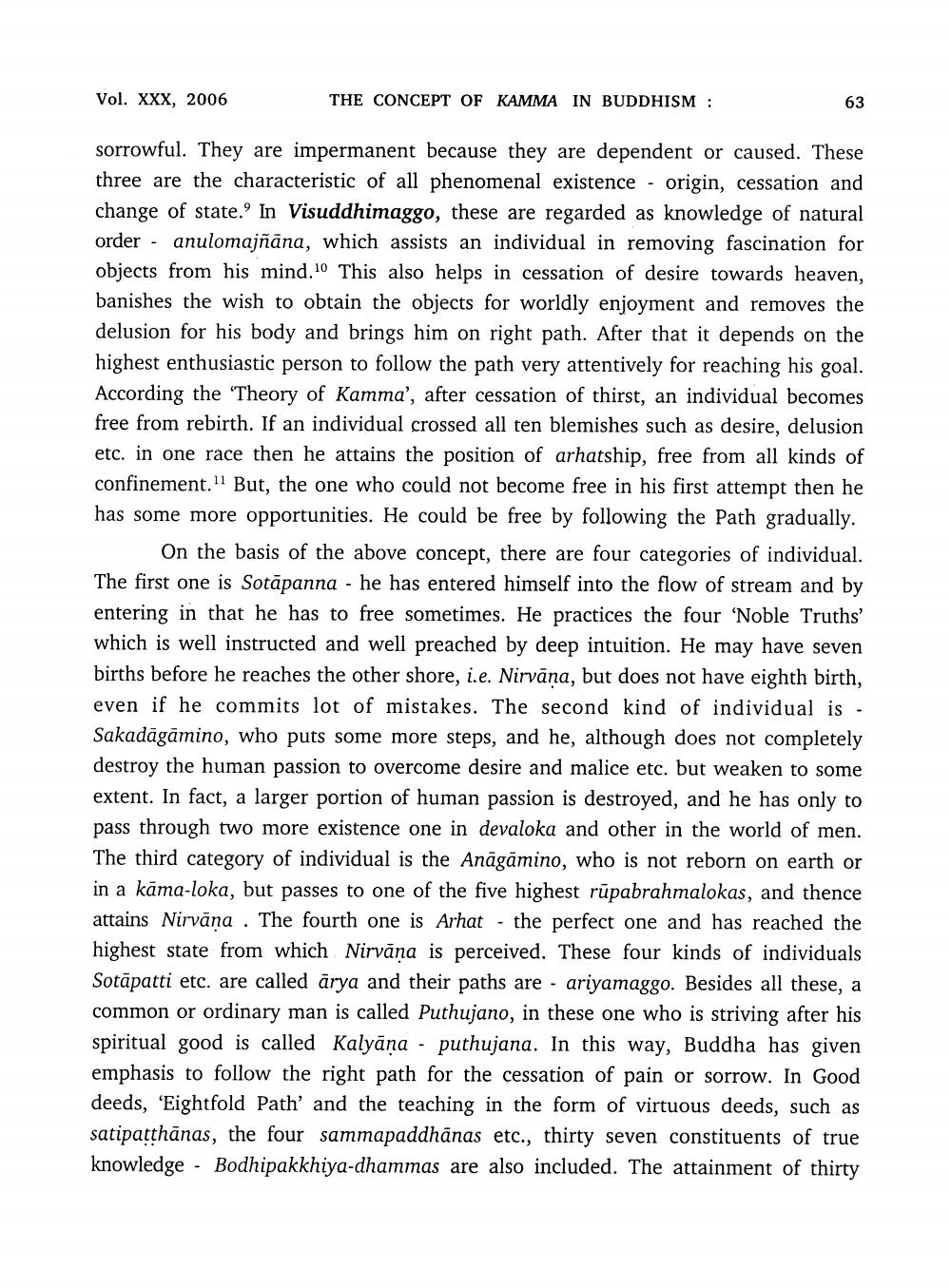________________
Vol. XXX, 2006
THE CONCEPT OF KAMMA IN BUDDHISM :
63
sorrowful. They are impermanent because they are dependent or caused. These three are the characteristic of all phenomenal existence - origin, cessation and change of state.' In Visuddhimaggo, these are regarded as knowledge of natural order - anulomajñāna, which assists an individual in removing fascination for objects from his mind. 10 This also helps in cessation of desire towards heaven, banishes the wish to obtain the objects for worldly enjoyment and removes the delusion for his body and brings him on right path. After that it depends on the highest enthusiastic person to follow the path very attentively for reaching his goal. According the Theory of Kamma', after cessation of thirst, an individual becomes free from rebirth. If an individual crossed all ten blemishes such as desire, delusion etc. in one race then he attains the position of arhatship, free from all kinds of confinement. 11 But, the one who could not become free in his first attempt then he has some more opportunities. He could be free by following the Path gradually.
On the basis of the above concept, there are four categories of individual. The first one is Sotāpanna - he has entered himself into the flow of stream and by entering in that he has to free sometimes. He practices the four 'Noble Truths' which is well instructed and well preached by deep intuition. He may have seven births before he reaches the other shore, i.e. Nirvana, but does not have eighth birth, even if he commits lot of mistakes. The second kind of individual is - Sakadāgāmino, who puts some more steps, and he, although does not completely destroy the human passion to overcome desire and malice etc. but weaken to some extent. In fact, a larger portion of human passion is destroyed, and he has only to pass through two more existence one in devaloka and other in the world of men. The third category of individual is the Anāgāmino, who is not reborn on earth or in a kāma-loka, but passes to one of the five highest rūpabrahmalokas, and thence attains Nirvana . The fourth one is Arhat - the perfect one and has reached the highest state from which Nirvana is perceived. These four kinds of individuals Sotāpatti etc. are called ārya and their paths are - ariyamaggo. Besides all these, a common or ordinary man is called Puthujano, in these one who is striving after his spiritual good is called Kalyāna - puthujana. In this way, Buddha has given emphasis to follow the right path for the cessation of pain or sorrow. In Good deeds, 'Eightfold Path' and the teaching in the form of virtuous deeds, such as satipatthānas, the four sammapaddhānas etc., thirty seven constituents of true knowledge - Bodhipakkhiya-dhammas are also included. The attainment of thirty




